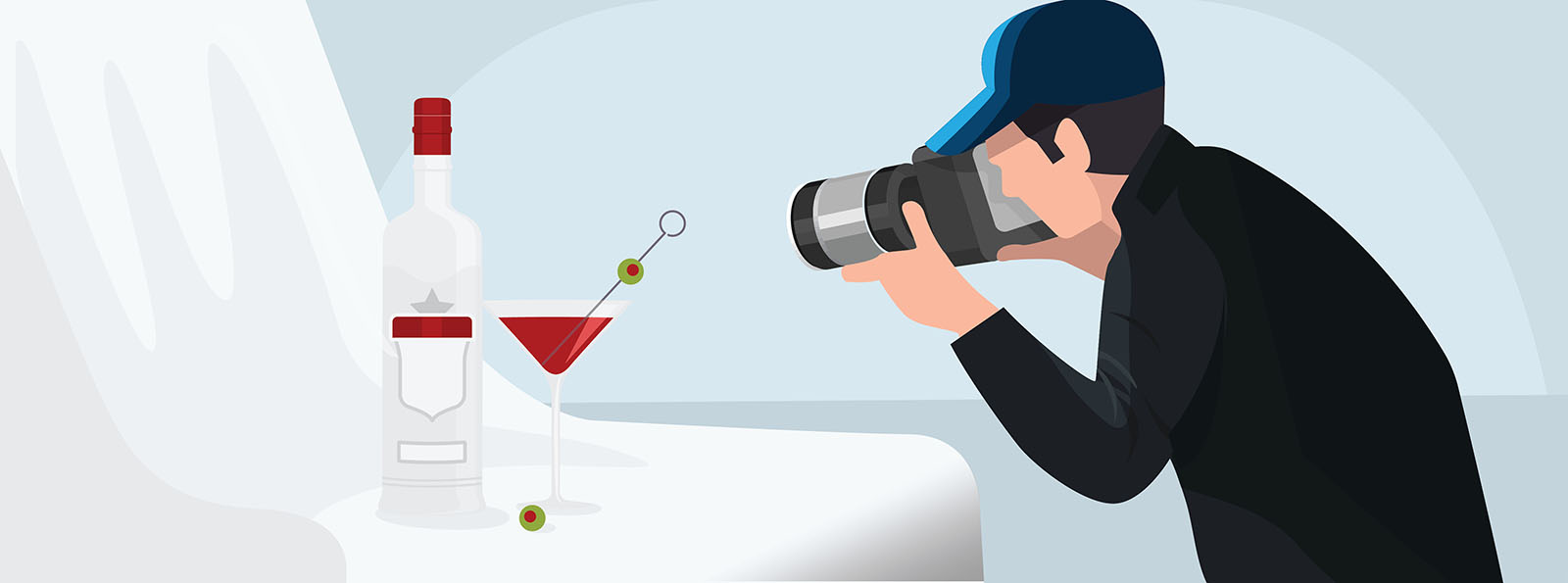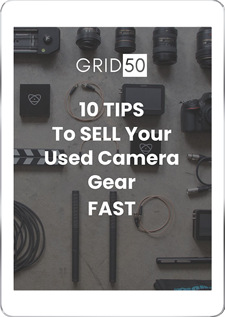Commercial Photography 101: What is it & How Do You Get Started?
In this guide, we take an in-depth look at commercial photography. We cover exactly what commercial photography is, examples, tips, and recommended gear to help you get started.
Want to turn your passion for photography into a rewarding career?
Commercial photography is a competitive field, but with the growth of digital advertising, the need for commercial photographers has skyrocketed. If you are already a hobby photographer, you may want to put those skills to use and specialize in commercial photography.
Not only is it a fun and rewarding career, it’s also quite lucrative. This commercial photography guide will cover everything you need to know to get started as a commercial photographer, including the equipment you’ll need, how much you can expect to make, and some tips for shooting better photos.
Read on or use the links below to “jump” to the section you’d like to check out:
- What is Commercial Photography?
- Commercial Photography vs. Advertising Photography
- Types of Commercial Photography
- Photography Examples
- How Much Do Commercial Photographers Make?
- How to Get Started
- What Gear Should You Use?
- Tips for Success
What is Commercial Photography?
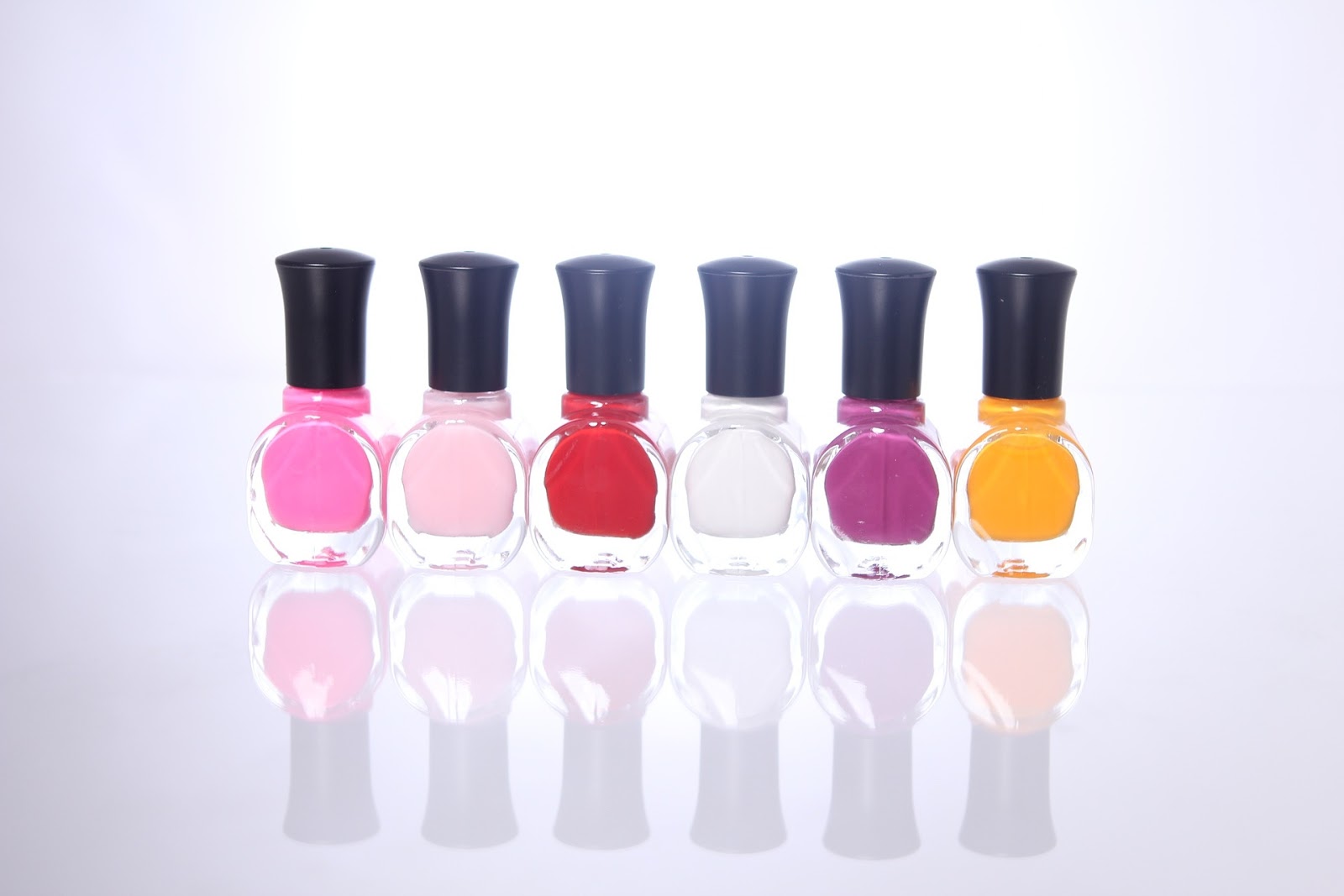
Photo Credit: Ellenllyy via Pixabay
In the most basic terms, commercial photography simply means taking photos for commercial use — think business, advertising, and product photography.
Commercial photography is used by companies who want to promote a product, lifestyle, or brand. Many of the photos you see on popular stock photography websites are commercial photographs.
Commercial photography is used by advertising agencies, marketing firms, tourism bureaus, and small business owners whose goal is to sell their brand using carefully curated photographs.
The Difference Between Commercial Photography & Advertising Photography
The terms advertising photography and commercial photography are often used interchangeably, but there are distinct differences between the two.
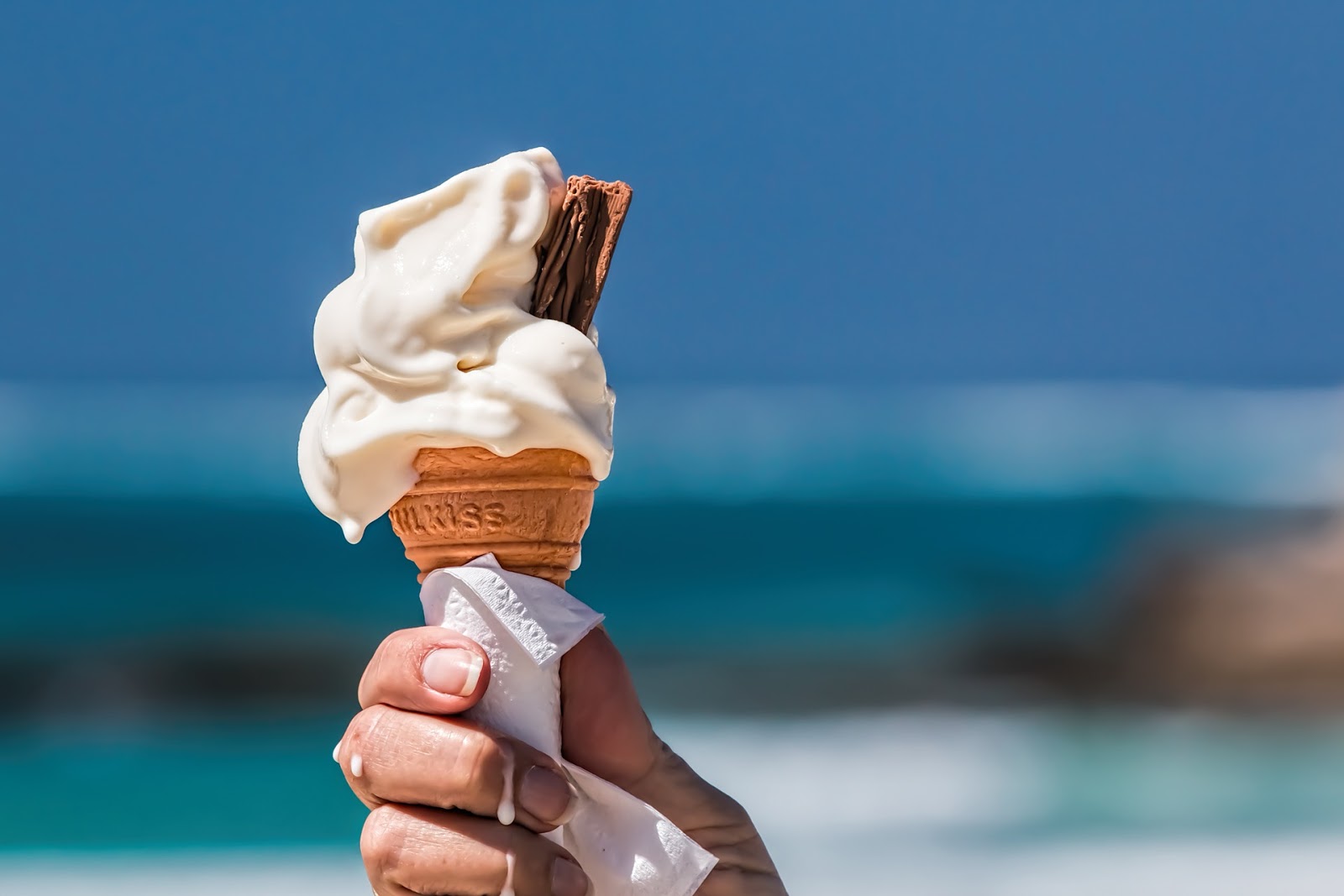
Photo Credit: Steve Buissinne via Pixabay
Both are used for promotional purposes, but with different intent, techniques, and equipment. Commercial photography is used to capture products in the best light possible and is often used in portfolios, catalogs, brochures, ads, and digital marketing. It is all about showcasing a product or brand.
Advertising photography includes elements of commercial photography, but it is much more involved.
Instead of simply capturing a product or brand, advertising shots must tell a story, evoke strong emotions, and persuade the viewer to make a purchase. Commercial shots are usually bright, clear, and simple so that the product can shine. Advertising shots make use of creative props, lighting, and editing techniques that may be highly stylized, bold, or dreamy, depending on the campaign and the motives of the ad.

Photo Credit: Free-Photos via Pixabay
Both commercial and advertising photography are powerful marketing tools, and while they certainly overlap, they require a different skill set, different tools, and a different budget.
Types of Commercial Photography and Finding Your Niche

Photo Credit: Marajana1 via Pixabay
A great way to be successful as a commercial photographer is to specialize and excel at one type of photography. Choose a niche based on your interests and work toward creating a portfolio of your very best shots. Here are some common types of commercial photography to help you narrow down your niche.
- Product Photography – There is a huge need for product photography across the globe, and talented photographers will always be in demand. Product photographers usually work in studios with controlled lighting, but some product shoots happen outside with natural lighting.
- Headshots – Headshots are modern portraits that are used for professional profile images in brochures, resumes, websites, and on social media. Traditionally headshots are taken from the shoulders up and can be captured outdoors or in a studio setting.
- Real Estate and Architectural Photography – Real estate photographers can work in both urban and rural areas and are charged with showcasing a property inside and out in order to make a quick sale. Real estate photographers will use a combination of natural and artificial lighting and a variety of wide-angle lenses.
- Drone Photography – Drone photography is a very specific type of commercial photography that is often used in conjunction with real estate photography, but is also used by tourism boards and event marketers. Photographs are shot from the air, enabling you to capture buildings or events from unique angles. Drone photography isn’t for beginners, but it’s a fun way to specialize and financially lucrative.
- Food Photography – It takes quite a lot of talent to make food look enticing in a photograph. Food photographers work almost exclusively indoors, often in a studio setting, but you may be required to shoot on-site at restaurants and commercial kitchens. Food photographers often work with food stylists to make every morsel shine.
- Fashion Photography – If you have experience shooting people and portraits, you should consider fashion photography. Companies hire fashion photographers to capture models wearing specific brands or engaging in different experiences. Fashion shoots can be outdoors or in the studio, but you should excel at giving direction and posing people on the fly.
- Workplace Photography – Also known as environmental portraits, workplace photography images will feature people at work — chefs in the kitchen, office workers at their desks, and construction workers using the tools of their trade. Workplace photos are used in brochures, websites, and advertising, and are usually shot on-site.
Commercial Photography Examples
Now that you have an idea of the types of commercial photography you can specialize in, let’s take a look at some examples featuring each type.
Here is an example of classic product photography. This curated image of color-coordinated work-out gear was shot in a studio setting and features several brands:
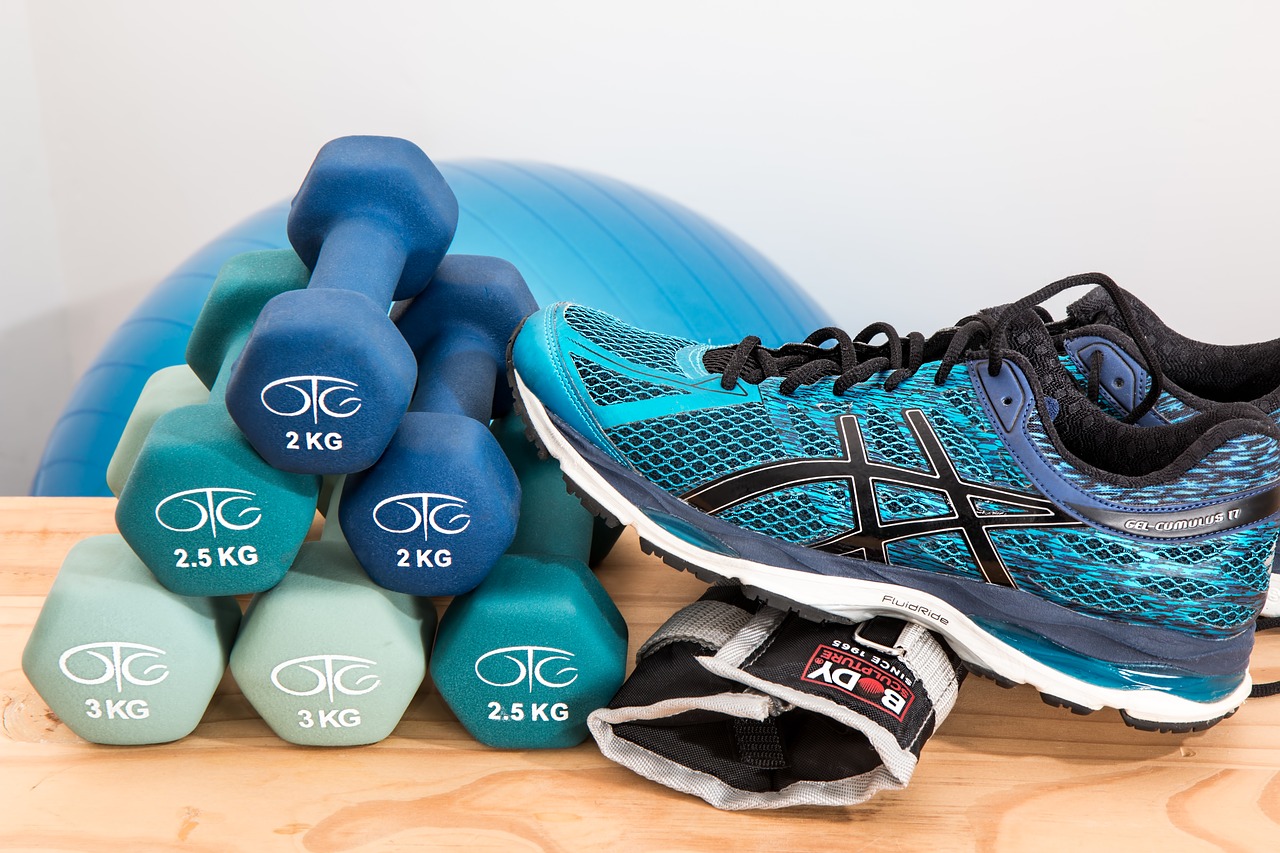
Photo Credit: Steve Buissinne via Pixabay
Headshots are often used by models and actors and should feature a close-up of the model’s facial features, usually from the shoulders up. This headshot was created in the studio against a dark background:
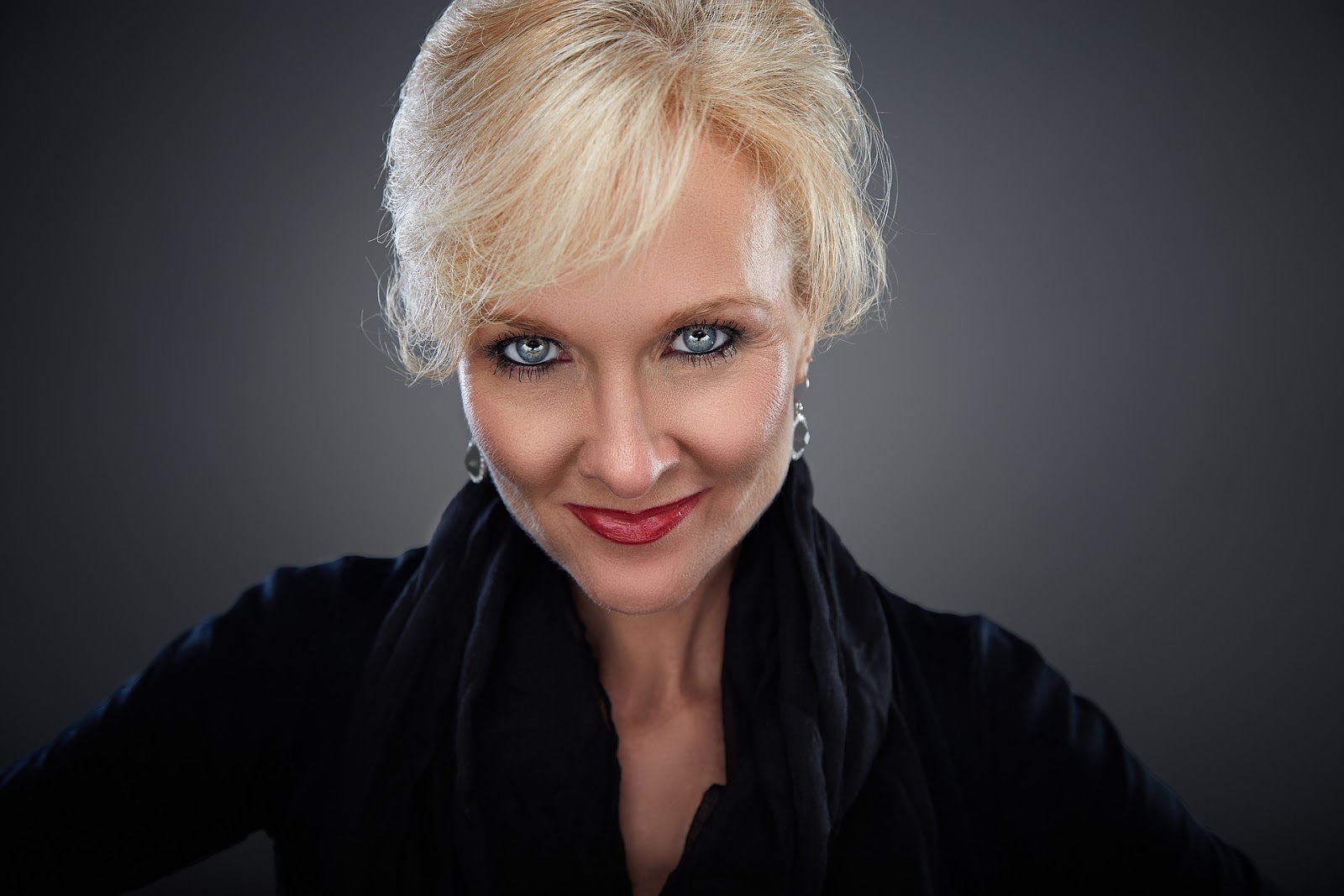
Photo Credit: John Harper via Pixabay
While real estate shoots consist of many indoor and outdoor images, the front of the building in good lighting is one of the most important shots to capture. This image was shot at dusk with lights on throughout the house for a warm and welcoming glow:
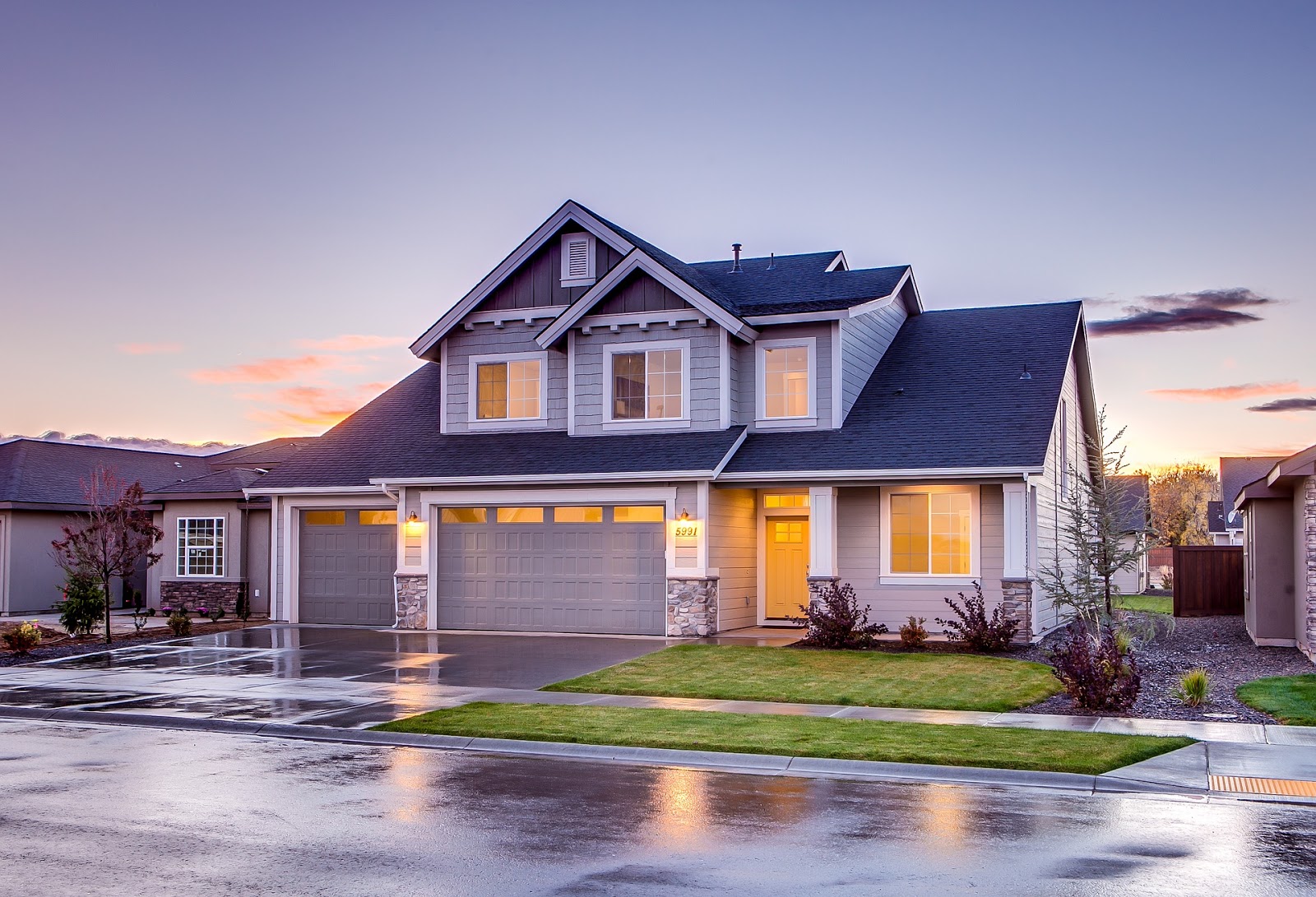
Photo Credit: Pexels via Pixabay
This carnival image was shot with a drone at night so as to better capture the lights and festivities of this colorful scene. Using an image like this is a great way for marketing teams to promote special events:
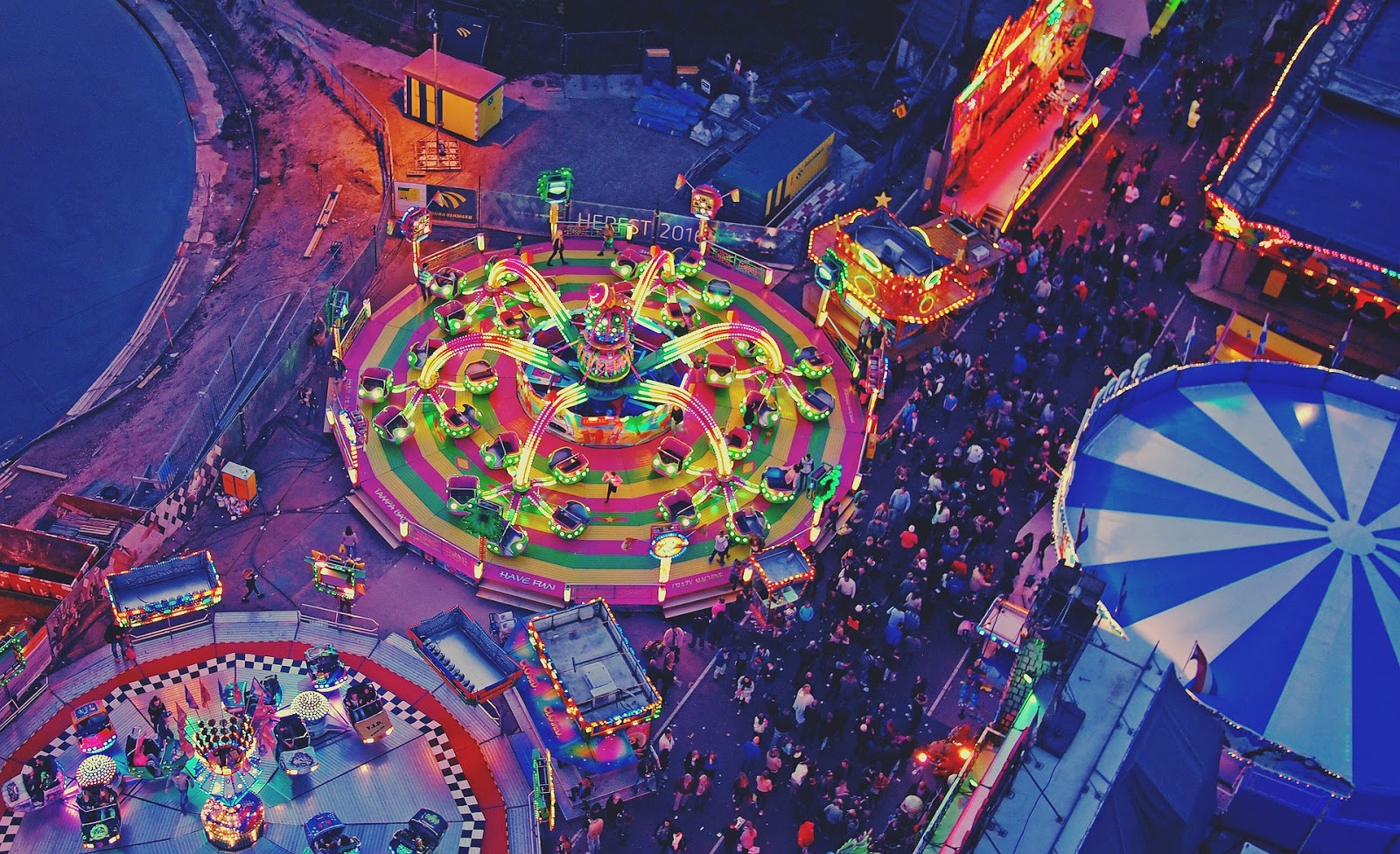
Photo Credit: Daria Nepriakhina
Fabulous food photos need precise styling and perfect lighting, which is best accomplished in a studio. In the photo below, notice the props – cherry tomatoes, sage leaves, and peppercorns that compliment the perfectly cooked pizza:

Photo Credit: Zuzana Gazdikova
Fashion images are used to highlight clothing, experiences, or products. Images are often created in the studio, but a natural setting can really add to the finished photo. In this photo, the green trees and garden really show off the red dress that the brand is trying to promote:
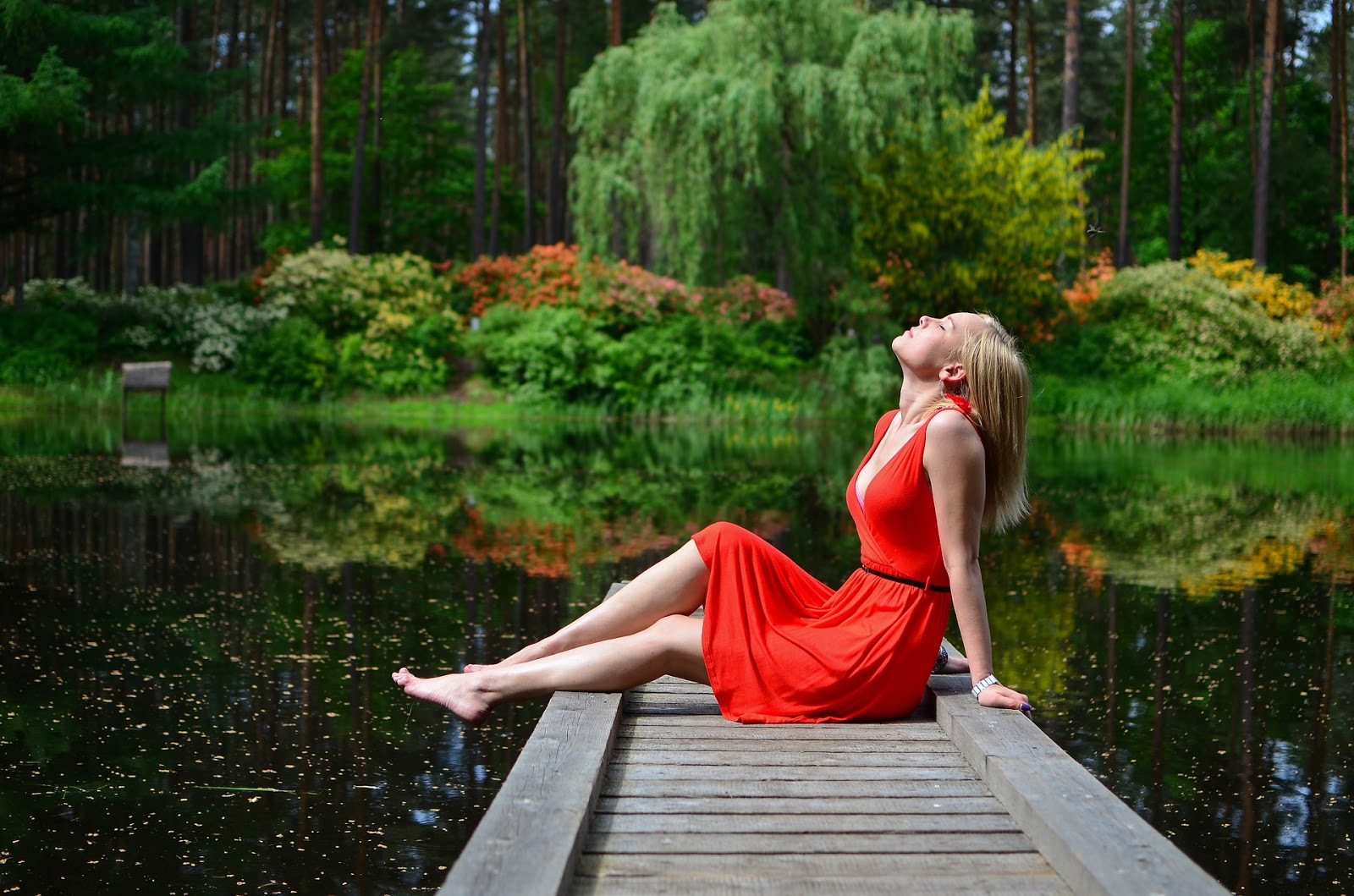
Photo Credit: Zigmars Berzins
Workplace photography sessions vary wildly in scope and require a photographer who is willing to always be on the go and prepared for anything. One day you could be shooting an oral surgeon in an office setting, and the next day you find yourself shooting a firefighter training as in the photo below:
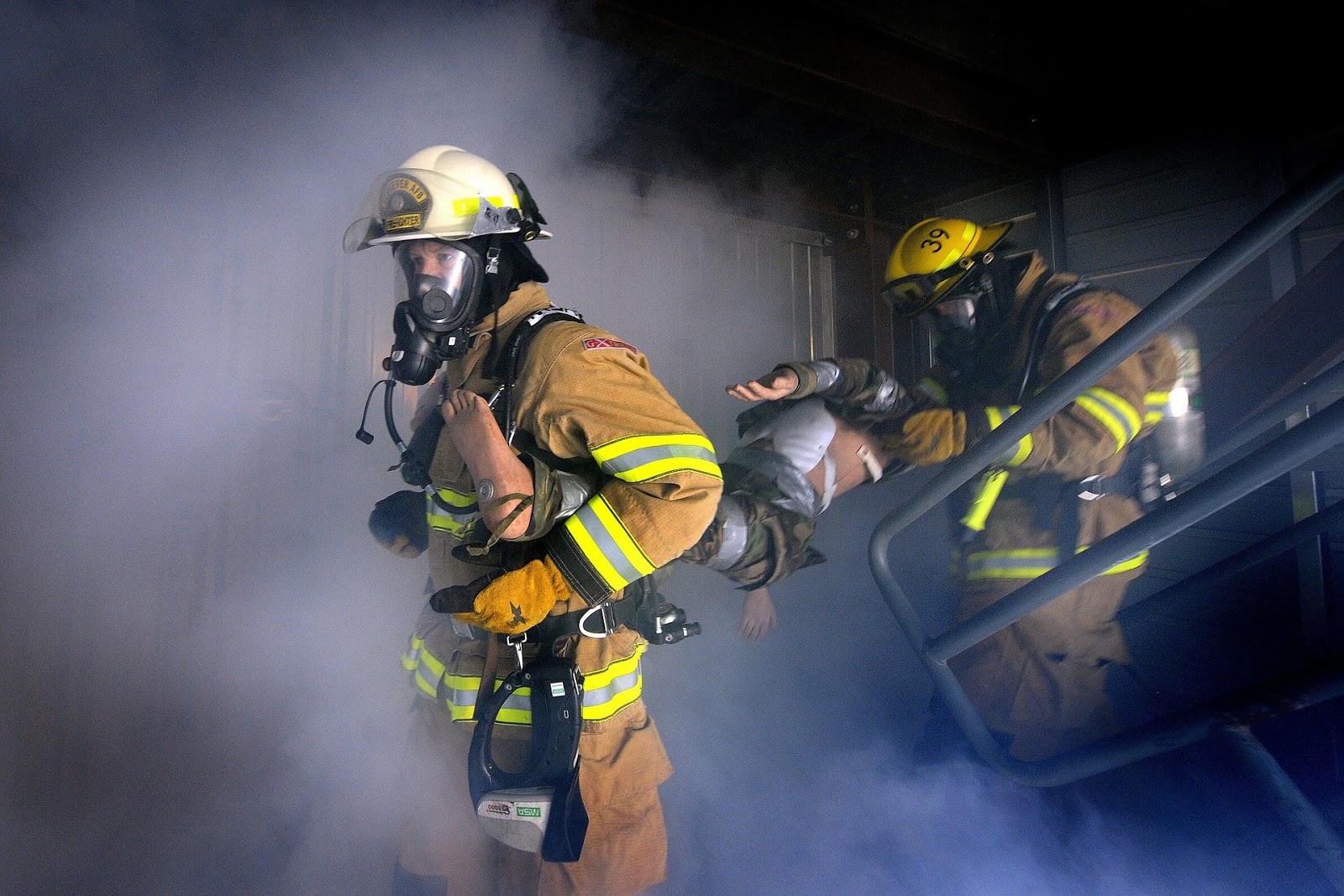
Photo Credit: David Mark via Pixabay
How Much Do Commercial Photographers Make?
If you are just starting out, you may be wondering how much you should charge as a commercial photographer. Your fees will vary depending on where you live, the scope of the shoot, and whether you need to hire additional contractors to help with the project. According to PayScale, the average salary for commercial photographers is $45,990.
One of the benefits of becoming a freelance commercial photographer is that you can set your fees based on your skills and experience. As your skill and reputation grows, so will your bottom line.
How to Get Started in Commercial Photography
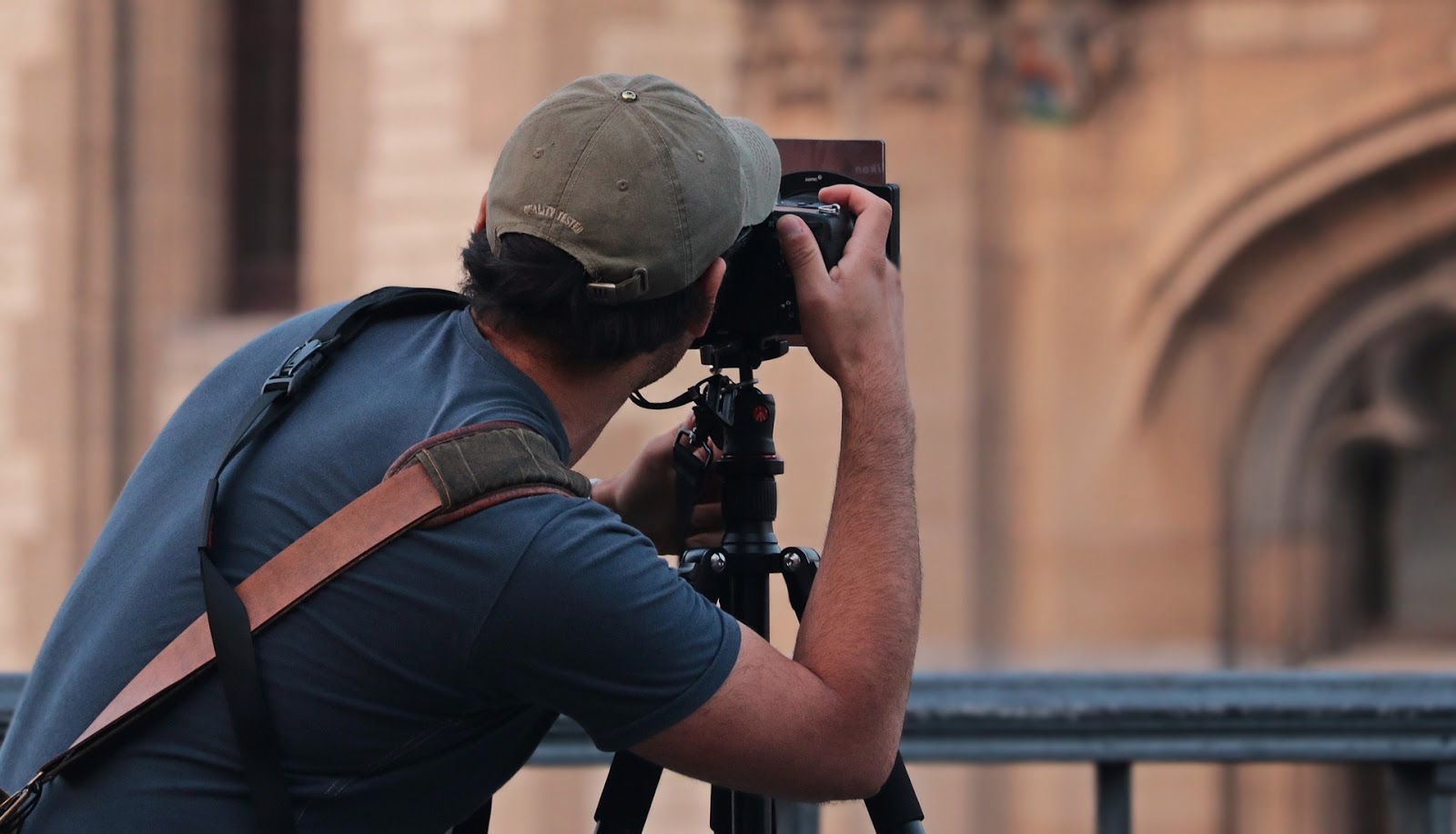
Photo Credit: S. Hermann & F. Richter via Pixabay
Assuming you already have a passion for photography, as well as some skill with a camera, becoming a commercial photographer isn’t complicated. As with any new business venture, you will have to spend time creating a business plan, buying the proper equipment, creating a website, and advertising your services.
The very first step will be deciding exactly what you want to shoot and choosing a niche to specialize in. When you are just starting out, you should be ready to shoot everything from breakfast cereal to sports cars, but eventually, you will want to find a niche where you excel and feel comfortable as a commercial photographer.
Choosing a niche will also help you keep equipment costs down, as you will find that what you need for fashion shoots is very different from the equipment needed for real estate photography.
Once you’ve narrowed down your photography niche, you can begin taking steps to find clients and grow your business. Here’s a step-by-step guide for getting started in commercial photography.
Step One: Create a Business Plan
A business plan will help you refine your goals, secure funding, and develop a marketing strategy.
Following your business plan will help you stay on track as you grow your client base, and enable you to make smart, strategic decisions about how to invest in your business and price your services.
Your commercial photography business plan should include the legal structure of your business, a description of your products and services, your target market, key marketing strategies, an operations strategy, and a projection of your income and expenses.
Creating a business timeline as part of your plan will help you take actionable steps to grow your business. Check out Expert Photography for a more comprehensive guide to writing a photography business plan.
Step Two: Secure Funding If Necessary
A successful commercial photographer will need specialized equipment that will require an initial investment. If you have the funds to purchase what you need before getting started, congratulations! If you don’t, you can either purchase your equipment slowly over time or you can obtain a small business loan to help you get started.
Photography equipment is expensive, and it’s a good idea to have backup equipment in case something in your toolkit fails while on a shoot. Make a list of the equipment you think you’ll need to get started, as well as funds for marketing, website creation, etc., and decide if you will need a loan to get your business off the ground.
The Small Business Administration is a great resource for finding financial resources to start your business, and they have offices in each state. Banks and other lenders will want to see a well thought out business plan before funding your start-up costs, so make sure you have that done before you apply for a loan.
Step Two: Purchase Necessary Equipment
To get your commercial photography business off the ground, you will need to invest in cameras, lenses, external hard drives, SD cards, lighting equipment, computers, and editing technology. It can be overwhelming to figure out what you need, and what purchases are the most important. Some items you will need right away, and some you can budget for as your business grows.
Specializing in a niche and following your business plan will help you figure out exactly what you need now and what can wait until you begin to pull in some income. We will go into the recommended equipment for starting out further below, but you will definitely need two camera bodies, lenses necessary for your niche, storage solutions, and a computer with editing software to get started.
Do your research, and buy the best equipment you can afford.
Step Three: Develop a Commercial Photography Portfolio
Showcase your best work in an online portfolio that is dedicated to your commercial photography. You can create a simple website by purchasing a domain name and signing up with a hosting service, or you can hire a web designer or tech-savvy friend to create a portfolio website for you.
Your online portfolio should only feature your very best work, so if you don’t already have commercial clients, you may want to offer your services at a discounted rate so you can showcase samples of your work.
Step Four: Advertise Your Services
Your website will act as a digital advertisement highlighting your best work, but if people can’t find your website, you will have a hard time securing clients.
Additional advertising outlets should include both digital and print and will vary depending on your location and your niche. Start by creating business cards, advertising your website with Google and Facebook, and putting up flyers around your city and town. You should also join your local chamber of commerce to network with small business owners who might need your services.
Recommended Photography Gear for Getting Started in Commercial Photography
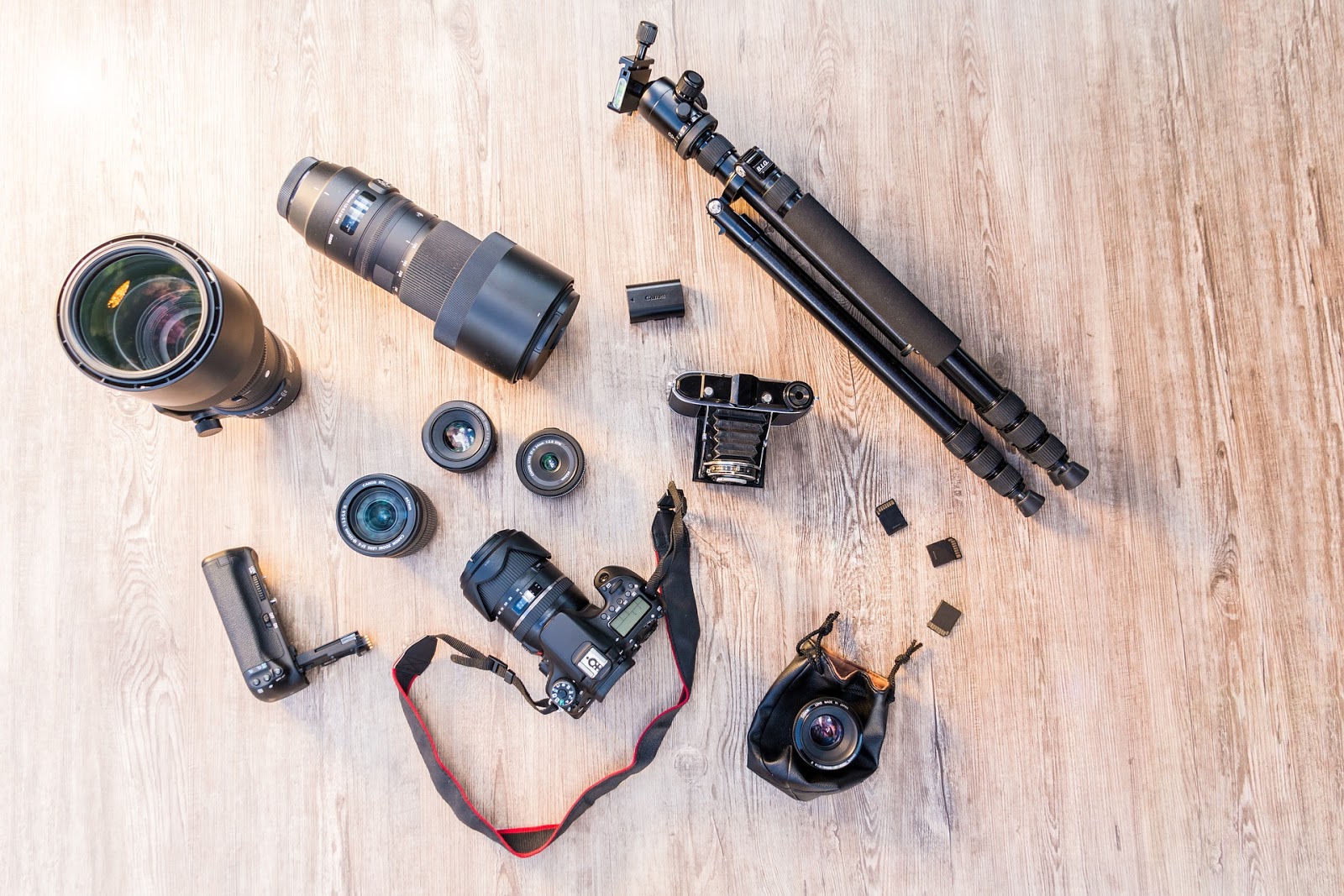
Photo Credit: TeeFarm via Pixabay
You could invest hundreds and thousands of dollars in your commercial photography business, but that isn’t usually a wise decision when you are just starting out. The following pieces of gear are the bare necessities for getting started. If you are already a hobby photographer, you will find that you already have some of these items:
- Two camera bodies – If you have a decent DSLR or mirrorless camera, you will be able to get started with what you have. If it’s time to upgrade, do some research beforehand, and purchase the best camera you can afford. If you are already attached to a certain brand, it makes sense to stick with it, so you can use the lenses that you already own. It’s important to have two camera bodies in case one malfunctions during a shoot. Not having a backup could very well ruin your relationship with your client and crew.
- A variety of lenses – The lenses you need for your commercial photography business will depend largely on your specialization. Real estate photographers, for example, will want a variety of wide-angle and tilt-shift lenses, and product photographers will want prime and zoom lenses with a wide aperture. Start with the necessary lenses that you can’t work without and make additional purchases as your business grows.
- SD cards – Keep a collection of SD cards in your camera bag so that you have them when you need them. Two 16GB – 32GB cards should be enough storage for most shoots.
- Extra camera batteries – Determine how long a battery lasts in your camera and buy enough for a few days of shooting. You should be charging your batteries before every shoot, but having spares is always a good idea.
- External hard drives – After each shoot, you will want to save your photos to your computer, a cloud-based service, and an external hard drive. If one of these storage solutions fail, you will have a backup ready to go.
- Tripod – Tripods are a necessity for shooting crisp, clear photos. The tripod you choose should be sturdy and lightweight with a head that is easy to adjust.
- External flash – You will be using a variety of flash and external lighting equipment for photoshoots, but to get started, you can purchase an external flash for better illumination of your subject.
- Camera gear bag – You will quickly realize how much equipment you have to carry to your photoshoots. Protect your gear with a dedicated camera bag that has room for your camera bodies, lenses, and tech equipment.
- Computer with Adobe editing tools installed – You should have a computer that is powerful enough for all of your editing needs. A minimum of 16GB of RAM and 1TB of storage should be sufficient to start. Adobe Lightroom and Photoshop set the standard for editing tools and are well worth the investment.
Commercial Photography Tips
Once you’ve got things up and running from a business perspective, you can start perfecting your craft and taking amazing photographs for your clients.
- Use a wide aperture – If you are photographing products, food, or headshots, use the widest aperture (lowest f-stop) that your camera and lens can accommodate. This will showcase your subject while making everything else disappear into a blurred background.
- Add a tilt-shift lens to your kit – For real estate and interior shots, use a tilt-shift lens to ensure that your vertical lines remain straight. Wide angle lenses will add an obvious distortion to your shots.
- Always use a tripod – Commercial photoshoots will almost always require a tripod for crisp images. Practice setting up your tripod and adjusting it quickly so it will become second nature on the job.
- Experiment with every conceivable angle – No matter what type of commercial photography you pursue, the composition will always be the most important element in your shoot. Explore your subject matter from every angle until you find the perfect shot.
- Practice your craft every day – Commercial photography can be your passion and your career. Get out and shoot every day to improve your skills.
Get Out There & Start Shooting!
Good commercial photographers are in demand all over the world. If you have skill with a camera and an eye for detail, then commercial photography is a great way to take your love for photography to the next level.
